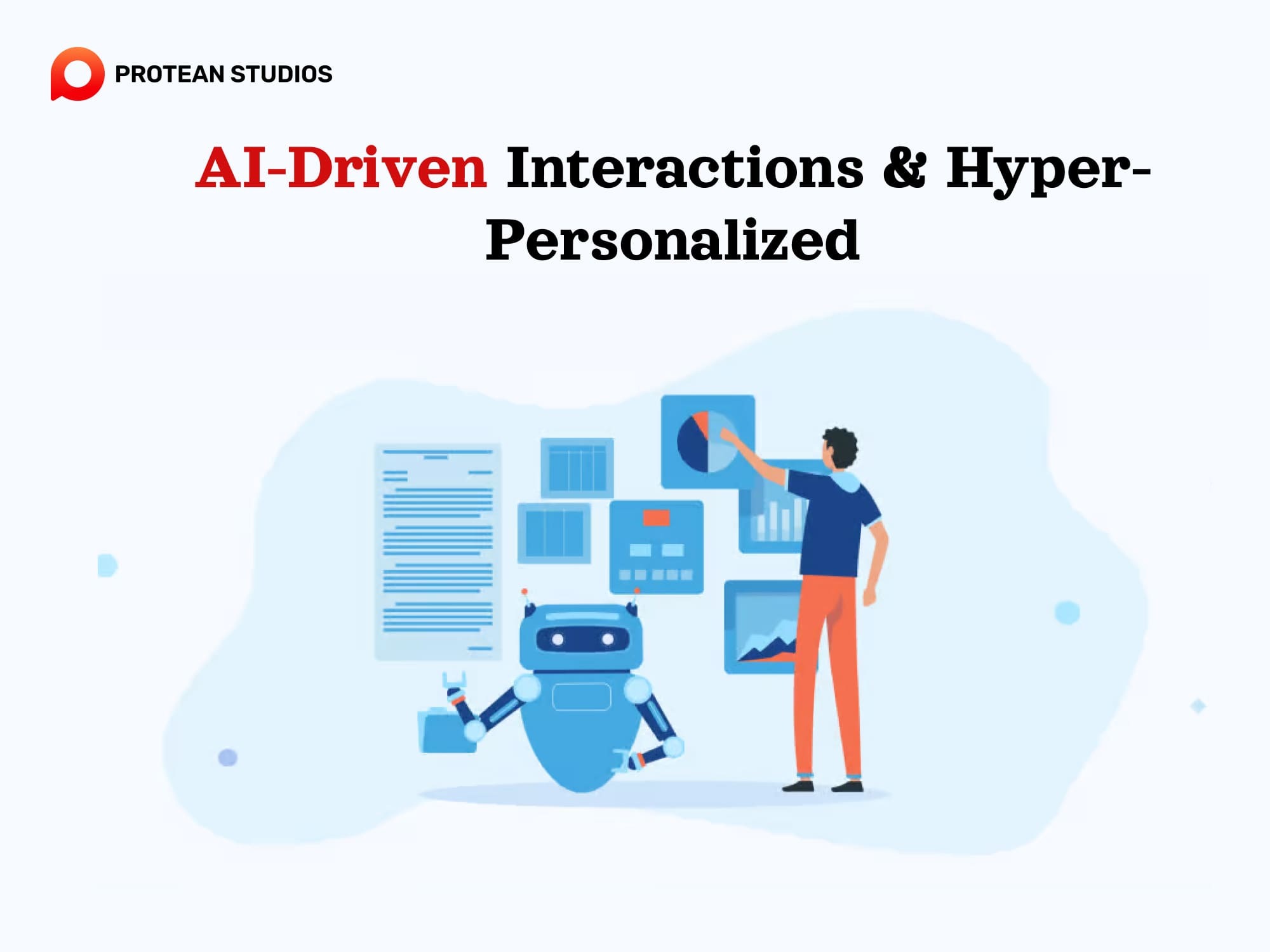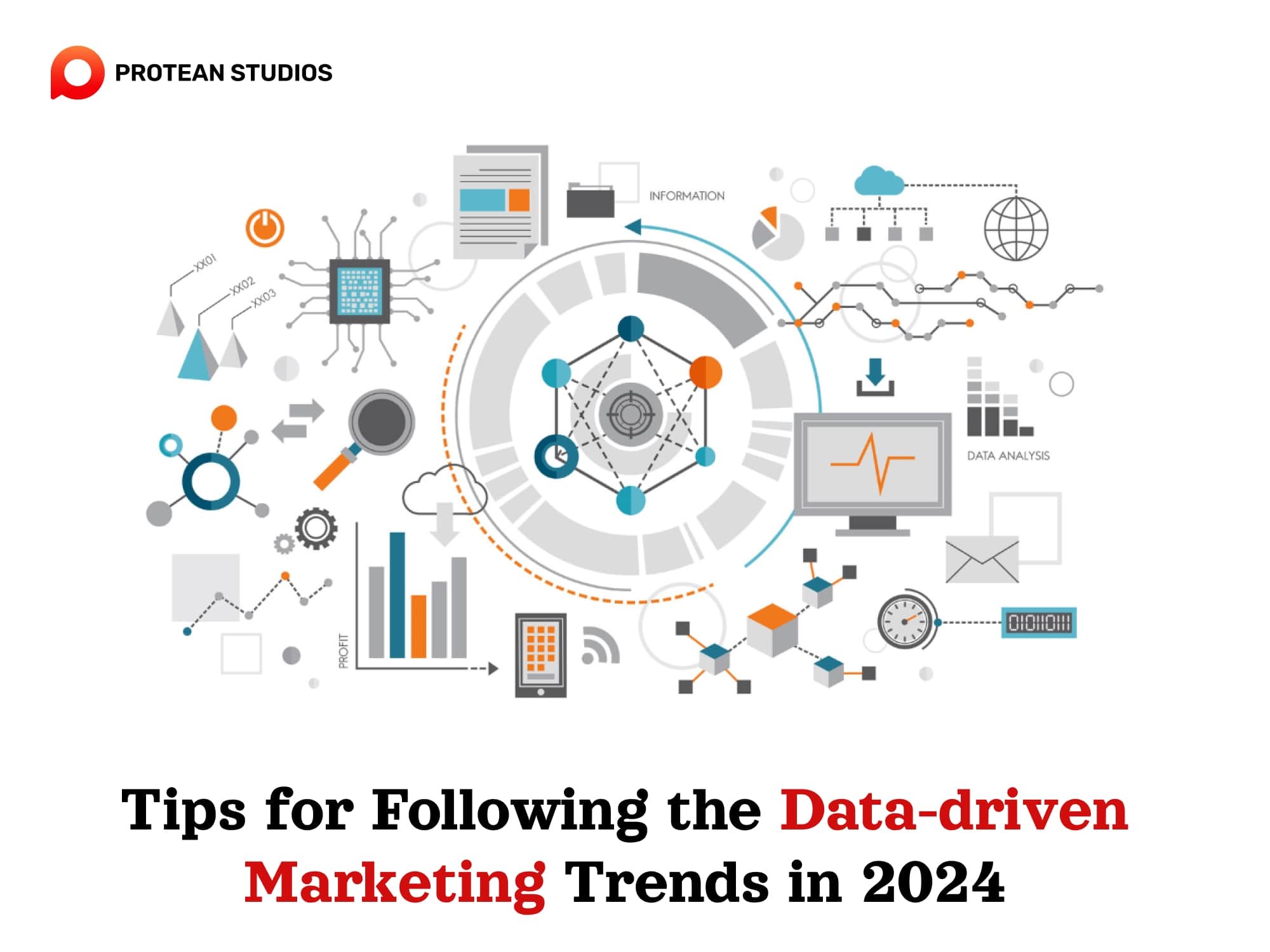In today's world, although everyone gets tons of ads, consumers are savvy, and data privacy is a top concern. But with data-driven marketing, you can create messages that are clear and interesting to the exact people you want to reach. Marketers need to embrace a data-driven approach that personalizes experiences, leverages new technologies, and builds enduring customer relationships.
In the blog, we'll explore the hottest trends in data-driven marketing for 2024 and beyond, so you can stay ahead of the curve.
The Hottest Trends to Incorporate into Your Upcoming Marketing Strategy
Marketing is an ever-evolving field, with new trends emerging as technology advances and consumer behaviors shift. To stay ahead of the curve, it's crucial to incorporate the latest trends into your marketing strategy. Check out these top trends you should think about below:
1. AI-Driven Interactions and Hyper-Personalized
Artificial intelligence (AI) is changing how brands engage with their customers, revolutionizing the process. By leveraging AI, companies can create hyper-personalized experiences that cater to the individual preferences and behaviors of each customer. This ranges from personalized product recommendations to customized email marketing campaigns. The key is to use data-driven insights to deliver relevant content that resonates with your audience.
“Take AWS and Hyatt, for instance. They joined forces to enhance the travel experience by offering personalized suggestions and extra services to guests, leveraging data such as their interests. The outcome? In just half a year, they saw a whopping $40 million surge in revenue.”

2. Category stretching
Category stretching involves expanding your brand into new territories. This doesn't mean new products or services, but also new ways of thinking about your brand. It's about breaking the boundaries of traditional categories to meet the evolving needs of consumers. By stretching your category, you can tap into new markets and demographics, keeping your brand fresh and relevant. Besides, you can see the guideline to build a ata-driven marketing plan.
3. Audience-Led Targeting
The era of one-size-fits-all marketing is over. Audience-led targeting is about understanding the specific needs and interests of different audience segments and tailoring your messaging. This approach ensures that your marketing efforts are more focused and effective, leading to higher engagement rates and better conversion.
4. Visual Search
Another trend in data-driven marketing is visual search. With the rise of platforms like Pinterest and Google Lens, visual search is becoming an important tool for consumers. Brands that optimize their content for visual search can improve their visibility and make it easier for customers to find their products. High-quality images, descriptive alt-text, and structured data are all essential for a successful visual search strategy.

5. YouTube Ads
YouTube remains a potent platform for advertisers. With its vast audience and advanced targeting options, YouTube ads can help you reach potential customers in an engaging environment. Whether it's through in-stream ads, bumper ads, or sponsored content, YouTube offers a variety of formats to suit your marketing goals.
With billions of users, YouTube is a gold mine for reaching new audiences. Craft engaging video ads that tell your brand story and target them at viewers who are most likely to convert.
Learn more: Top 10 Tools For Supercharging Data-Driven Marketing
6. Integration of Chatbot Apps
Chatbots are increasingly essential in the customer service journey. They provide instant support and can handle a wide range of queries, from simple FAQs to complex transactions. Integrating chatbot apps into your marketing strategy can enhance customer engagement. It streamlines the buying process and provides valuable insights into customer behavior.
Some hints for following the data-driven marketing trends in 2024
Data is king in today's marketing world, and using it effectively can make your brand shine.
Gather the right data: Go beyond demographics. Look at website behavior, sales history, and social media interactions to understand your audience on a deeper level.
Merge your data sources. Don't let valuable customer insights get scattered across different platforms. Consider investing in a Customer Relationship Management (CRM) system to centralize your data and obtain a comprehensive understanding of your audience.
Go beyond demographics: While age and location are helpful, dig deeper! Analyze website behavior, sales history, and social media engagement to understand your audience's needs and preferences.
Embrace Experimentation: The marketing landscape is evolving, so don't be afraid to experiment with different strategies and tactics. Track your results using data to see what works and what doesn't. By employing this data-driven marketing, you can enhance the performance of your campaigns.
Focus on Customer Privacy: With data privacy regulations evolving, focus on transparency and build trust with your audience. Ensure clarity regarding the collection and utilization of their data.
Integrate Chatbots for Support: Chatbots can provide 24/7 customer support, answer questions, and even personalize interactions based on customer data.
Respond to Audience Feedback: Listen to your audience through surveys, social media interactions, and customer reviews. Use this feedback to refine your marketing strategies and create experiences that resonate better with them.

Summing up the latest trend
These trends show that using data to market changes over time, and it’s important to go in the right direction. By incorporating these trends into your data-driven marketing strategy, you can ensure that your brand remains competitive and resonates with today's consumers. Keep an eye on these developments and be ready to adapt your approach to stay at the forefront of the marketing landscape. We hope our predictions help you start great campaigns in the upcoming year!




